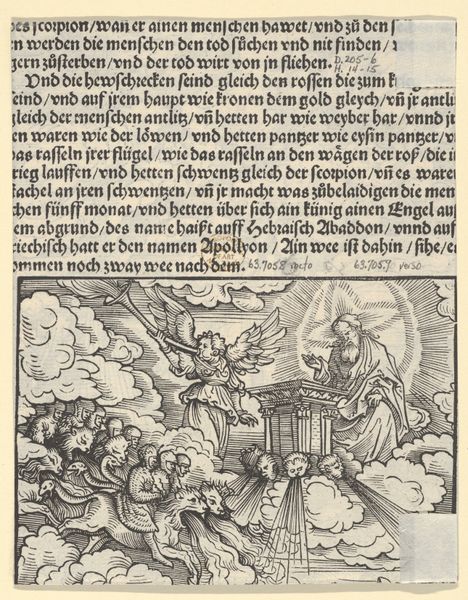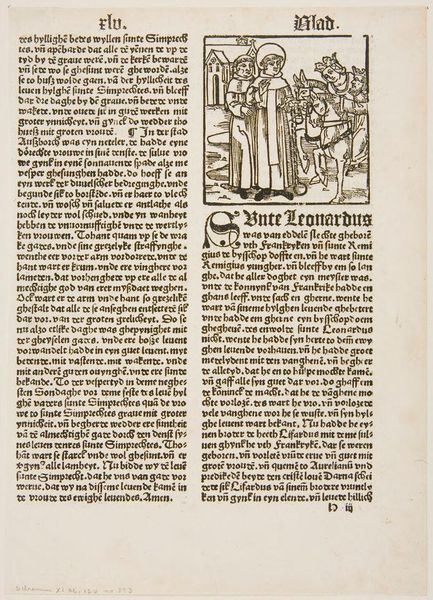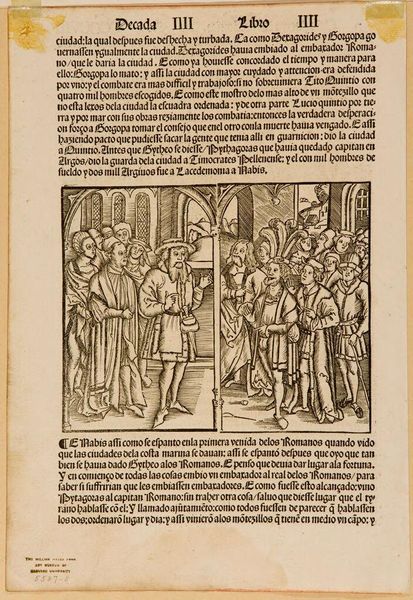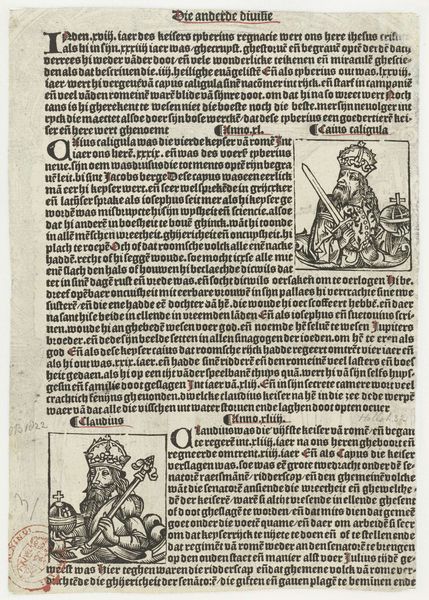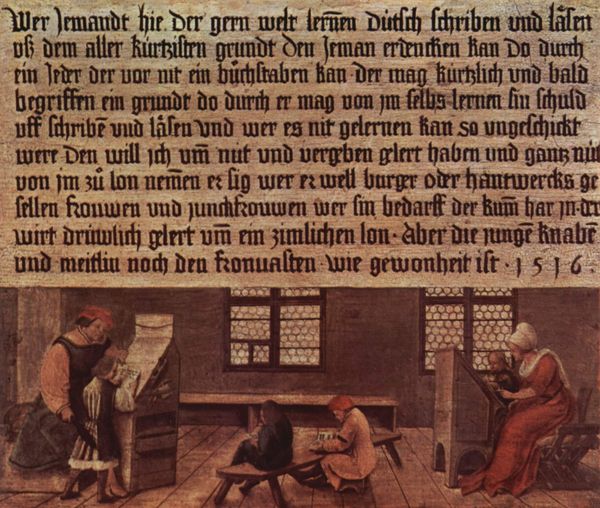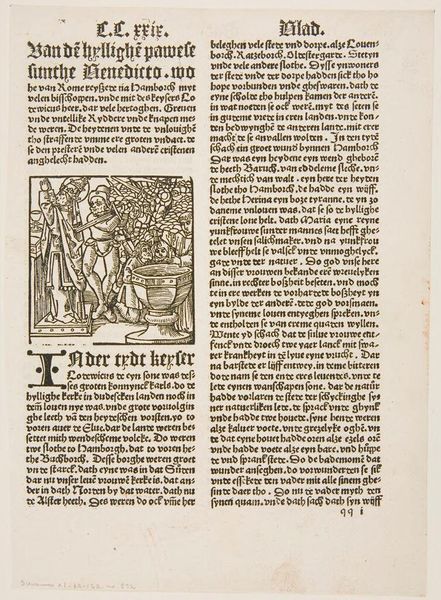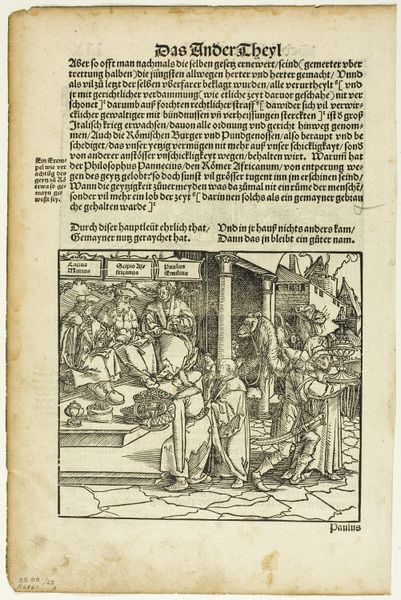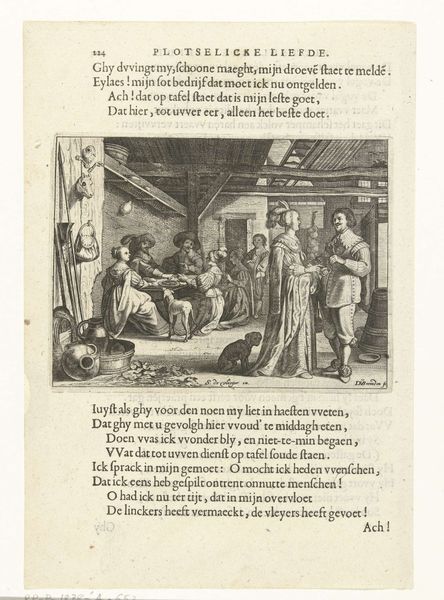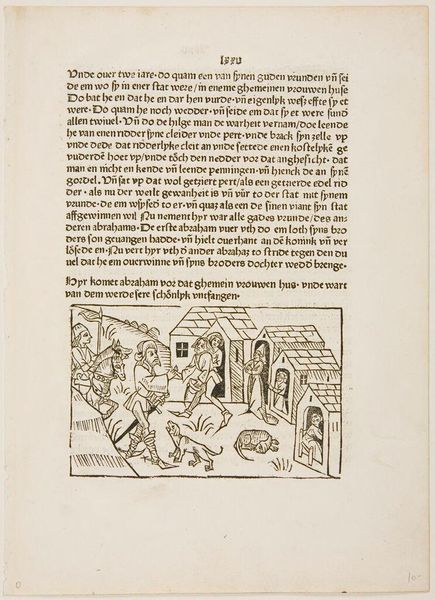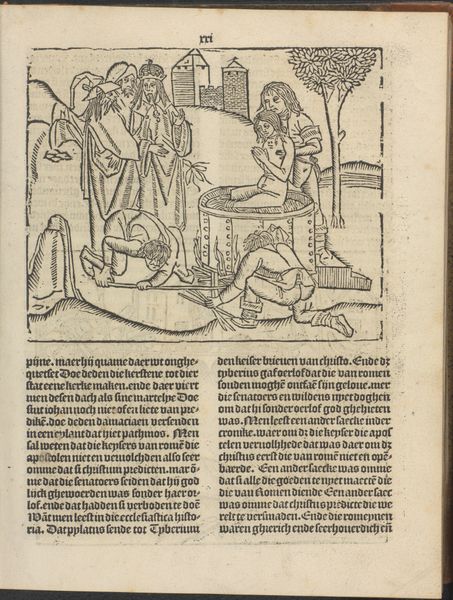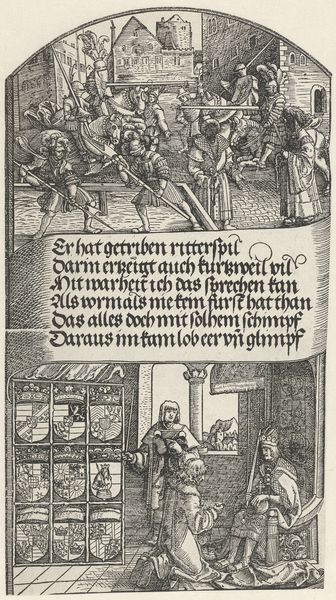
print, woodcut
#
narrative-art
# print
#
figuration
#
woodcut
#
northern-renaissance
Dimensions: height 112 mm, width 83 mm
Copyright: Rijks Museum: Open Domain
Curator: This woodcut, Lucas van Leyden's "The Birth of Christ," created between 1512 and 1516, is striking in its stark materiality. The roughness of the medium, the carved lines so clear and unyielding… It speaks to the physical labor involved. What catches your eye about it? Editor: Well, I'm really drawn to the way it’s split in half: text on one side, the image on the other. I wonder about that choice. Curator: Exactly. What relationship do you think that establishes between the word and the image? We often consider the artist's skill and vision, but what about the printer's labour, or even the paper maker’s? Consider that the text itself would’ve been carved into the wood. What does that say about the value assigned to these different processes, particularly the reproductive process of printmaking, at the time? Editor: So you are thinking that the physical making of the artwork changes our perception? It is a commercial object as well as an object of reverence? Curator: Precisely. Woodcuts like this one were more accessible than paintings. They democratized religious imagery to a certain degree, bringing these narratives to a wider audience. The imperfections in the carving, the very nature of the print, becomes part of its meaning. Think about the context: The rise of the printing press, the increasing literacy, what's being made accessible, and who is now participating? Editor: So, we’re moving beyond just admiring the religious iconography and thinking about the materials themselves, about labor, and consumption! It makes me think differently about who had access to art back then. Curator: Yes, by understanding the material conditions of its production, the labor, and the technology, we gain a much richer understanding of the artwork itself and its role in society. Editor: I learned a lot! Looking at it this way gives such a concrete view of art creation and its relation to the social backdrop of the Renaissance.
Comments
No comments
Be the first to comment and join the conversation on the ultimate creative platform.
